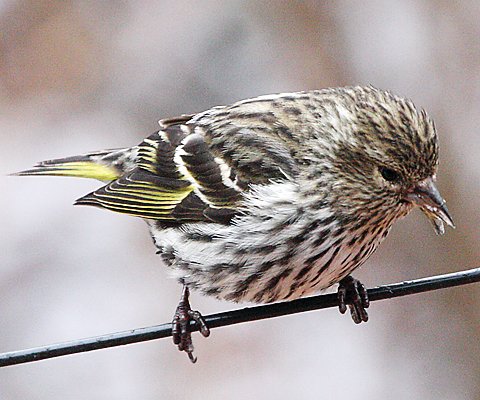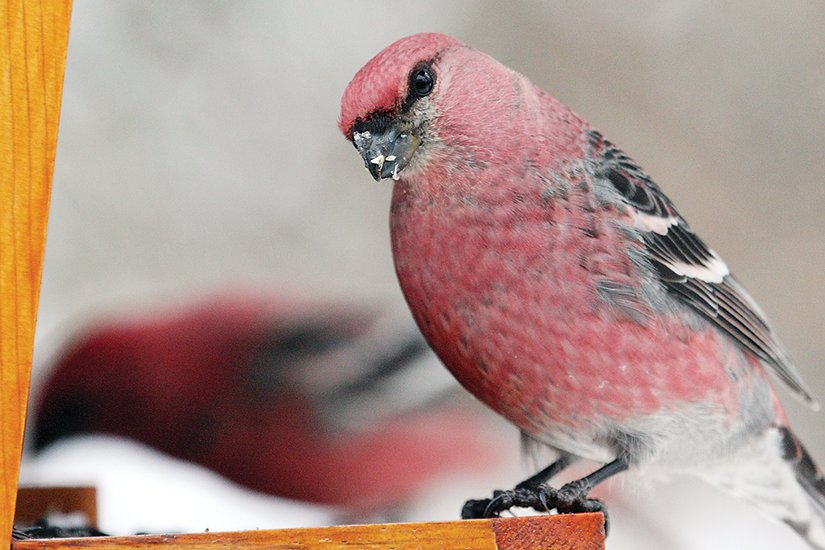Support the Timberjay by making a donation.
Forecast suggests second year without pine grosbeaks
Annual prediction of northern finch movement still offers some good news for the North Country
REGIONAL— Will bird fans in our area be forced to survive a second winter in a row without the presence of what is usually the highlight of a North Country winter bird feeder? That’s the …
This item is available in full to subscribers.
Attention subscribers
To continue reading, you will need to either log in to your subscriber account, or purchase a new subscription.
If you are a current print subscriber, you can set up a free website account and connect your subscription to it by clicking here.
If you are a digital subscriber with an active, online-only subscription then you already have an account here. Just reset your password if you've not yet logged in to your account on this new site.
Otherwise, click here to view your options for subscribing.
Please log in to continue |
Forecast suggests second year without pine grosbeaks
Annual prediction of northern finch movement still offers some good news for the North Country
REGIONAL— Will bird fans in our area be forced to survive a second winter in a row without the presence of what is usually the highlight of a North Country winter bird feeder? That’s the prospect portrayed in the annual Winter Finch Forecast, based on input from a network of intrepid Canadian birders who monitor wild food supplies across the boreal forest.
There’s both good news and bad in this year’s report, but the top headline for birders in our region is the prediction that pine grosbeaks are unlikely to move south this winter, due to an abundant crop of mountain ash berries. A productive mountain ash crop was blamed for the no-show of pine grosbeaks last year, so a repeat of those conditions would suggest that these sublime finches won’t appear here in large numbers yet again.
Last year was the first time in more than 30 years that we saw an almost total lack of pine grosbeaks, so I’m still hopeful that we might see at least some movement of these birds into our area this winter. They typically start showing up here in mid-October, so listen closely when you’re in the woods for the sweet whistling notes of these colorful grosbeaks. And keep your fingers crossed.
While pine grosbeaks might be scarce this year, other finches are already showing up in large numbers. As the finch forecast notes, spruce cone crops are abundant this year from northwestern Ontario to Alaska, which should keep large numbers of finches in the western half of the boreal forest this winter. Fortunately for us, that includes our region, which is connected, ecologically if not politically, to northwestern Ontario. We’re already seeing huge numbers of pine siskins in our area, which have been feeding aggressively on both spruce and white cedar cones. I’ve been consistently running into large flocks of siskins along the Ancient Cedars Trail in Tower the past couple weeks.
Keep in mind that the finch forecast is written primarily to predict the movement of northern finches into southern Ontario or New England— areas well to the south of our region. That’s why bad news for those areas doesn’t necessarily mean the same for us. With solid cone crops here, we should see plenty of siskins and crossbills, which are all highly nomadic. These species are found in our area year-round, in varying numbers depending on food availability, so we aren’t dependent on southerly movement for them to appear. The pine grosbeaks, which breed starting just north of the border, don’t have incentive to move south, even a little, as long as they have sufficient food where they are. Migration is always hazardous for birds (just as it is for people), so there’s good reason to stay put, if you can.
One consistent report from the boreal woods is the relatively poor crop of birch seed this year. That should send large numbers of redpolls south this year, including into our region. Redpolls breed in the Arctic and although some of these birds always seem to winter in our area, their numbers can explode here when birch seed crops are poor. When they appear in large numbers, they can quickly come to dominate bird feeders, where they feed on black oil sunflower seeds and, especially Niger thistle, so the bird seed bill could spike this year.
It’s worth noting that the longtime author of the much-anticipated finch forecast, Ron Pittaway, announced his retirement from the forecasting business earlier this year. Fortunately, one of his proteges, Tyler Hoar, a Canadian biologist, is taking over and he hopes to further expand the network of observers who monitor cone and berry crops across the Canadian boreal forest. It’s those observations that make the finch forecast possible.









